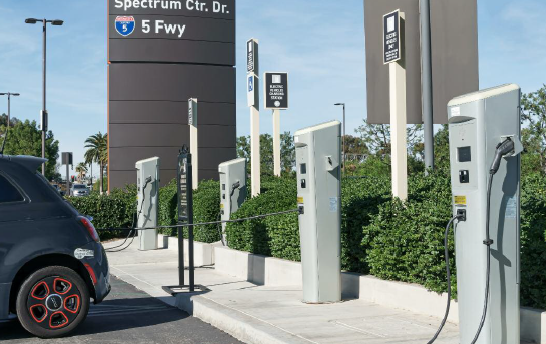When it comes to energy technologies and manufacturing, America aims to be at the forefront of innovation, as Open Access Government finds out
In September 2018, the U.S. Department of Energy (DOE) shared the news that 42 projects were selected to support advanced vehicle technologies, with a total amount of $80 million in funding to support this. It is hoped that these projects will facilitate more affordable mobility, reduce dependence on foreign sources of critical materials, strengthen domestic energy security and enhance the country’s economic growth.
This important aspect of the DOE’s work supports their ambition to invest in early-stage research of transportation technologies that can provide businesses and families with a greater choice in how their mobility needs are met. Commenting on this important part of DOE policy, U.S. Secretary of Energy Rick Perry says:
When it comes to batteries and electrification, the funding for these projects totals $31.9 million. These projects set out the technologies which will recharge multiple electric vehicles speedily and at considerably high “extreme” power levels. Materials and the research projects total $8.4 million and these intend to develop models that predict corrosion in multi-material joints for materials in high-temperature combustion environments that can be used to accelerate the introduction of new materials into advanced vehicles, as well as lightweight vehicle structures.
Another part of this funding for transportation technologies concerns projects worth $10.1 million around engines and fuels. We find out that these projects will research advanced multi-mode (spark ignition/ compression ignition) engines with co-optimised fuels
for bio-derived blendstocks for diesel engines for medium- and heavy-duty vehicles, as well as light-duty vehicles.
One last example is the $3.4 million funding in place for off-road and fluid power systems, the projects of which will focus on improving the energy efficiency of off-road vehicles used in agriculture, construction and mining applications. (1)
Manufacturing
Other energy technologies supported by DOE include LED bulbs and solar panels, as well as electric vehicles which were discussed earlier in this article. When it comes to manufacturing in the U.S., this is the lifeblood of the economy because it provides jobs for
hard-working families and also helps to increase U.S. competitiveness, according to the DOE. In addition, the DOE is supporting manufacturers to increase their productivity in energy by implementing energy efficiency measures. (2)
Research & development consortia
Staying on the subject of manufacturing, it’s worth noting here that the DOE’s Advanced Manufacturing Office (AMO) brings together a number of actors to pursue coordinated early-stage R&D in high-priority areas around energy in manufacturing. These include manufacturers, small businesses, universities, national laboratories, as well as state and local governments. While these consortia have distinct technology focus areas, they are all working towards the common goal of securing the country’s future by means of manufacturing innovation, collaboration and education.
In addition, AMO’s five institutes are part of Manufacturing USA, which is a network of regional institutes, each of which has a specialist technology focus area. We know that these institutes facilitate the transition of information, innovative advanced materials and process technologies to industry. This approach enables manufacturing scale-up and helps to develop national capabilities that enable workforce development and future global leadership in advanced manufacturing. (3)
Closing thoughts
Finally, it’s worth noting that the energy technologies and manufacturing discussed here are just two examples that strongly support the overall mission of the DOE, which is: “to ensure America’s security and prosperity by addressing its energy, environmental and nuclear challenges through transformative science and technology solutions.” (4). Certainly, the DOE is working towards ensuring America’s Energy Future by various means, including the ones described here.
References
1 https://www.energy.gov/articles/department-energy-announces-80-million-investment-advanced-vehicle-technologies-research
2 https://www.energy.gov/energy-economy/manufacturing
3 https://www.energy.gov/eere/amo/research-development-consortia
4 https://www.energy.gov/about-us
Jonathan Miles
Editor
Open Access Government
editorial@openaccessgovernment.org
www.openaccessgovernment.org
www.twitter.com/OpenAccessGov











